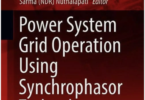by Fred Steinhauser, OMICRON electronics GmbH, Austria
The recent technical advancements have delivered multifunctional devices that integrate an impressive range of functionality. But what works well in consumer products might not be optimal in other fields.

What we have experienced with the proliferation of the smartphones during the past two decades is amazing. Much of the functionality for which we had used other, dedicated devices, is now covered in some way with the smartphone.
As one example, I pick the camera feature, which has not only changed the way we make and manage photos, it also has impacted the market for dedicated cameras.
Such success stories are seducing. The perception is fostered that integrating as many functions as possible into one device must undoubtedly deliver advantages, even in professional products. Often, when a new functionality is offered on a new, dedicated device, we hear the same question: “could this functionality not be integrated in <whatever product the customer already has or knows>?”
There may be several assumptions and arguments behind these wishes, but much of it is based on a gut feeling. But gut feeling doesn’t always stand up to fact checking. Let us go back to the camera example. I still own a sophisticated camera, but I rarely use it anymore. The one in my smartphone is good enough for everyday use. But the market for professional cameras has not disappeared. Professionals still use high quality cameras to achieve their ambitious goals.
One decisive factor is that advanced requirements can only be fulfilled with correspondingly advanced hardware. It is obvious that the smartphone, despite all advances and smart solutions, is rather limited in the way lenses can be arranged. The are limitations that cannot be overcome by “just software”.
How does this relate to professional products like the ones we use for testing and maintaining our PAC systems? We have this wish for integration of functionality into existing devices just as well. It is always questioned why the user should have to buy and carry an additional box for the new functionality. But new functionality is also often based on the capabilities of new hardware. Back-porting new functionality on pre-existing hardware will always restrict the functionality.
And there is the complexity that comes with always extending an existing product. This is mostly overlooked or even ignored. There will be resource conflicts of many kinds. First, about the hardware itself. Then about development teams implementing the different features, because the pre-existing features will not remain untouched. And further about the possible side effects, for which also the pre-existing features must be re-tested. The whole thing amounts to more than the sum of issues.
The user may claim that these issues do not bother him as these are the business of the vendor. But these escalating efforts have their price – and this must be paid by the user. And these efforts must be amortized with a relatively low number of units, as we are not producing millions of smartphones. So, instead of getting a feature for cheap, you might pay more for less.
Finally, the features are most likely mutually exclusive when it comes to using them. In many cases, only one can be used at a time. While two teams could be working on two tasks using two dedicated devices, you can most likely just serve one task at a time with the multifunctional device. Or have you ever tried to make a phone call while taking a photo with your smartphone?
So, be careful when you demand integration of functionality. You will get something, but it may not be what you wished for.
Biography:

Fred Steinhauser studied Electrical Engineering at the Vienna University of Technology, where he obtained his diploma in 1986 and received a Dr. of Technical Sciences in 1991. He joined OMICRON and worked on several aspects of testing power system protection. Since 2000 he worked as a product manager with a focus on power utility communication. Since 2014 he is active within the Power Utility Communication business of OMICRON, focusing on Digital Substations and serving as an IEC 61850 expert. Fred is a member of WG10 in the TC57 of the IEC and contributes to IEC 61850. He is one of the main authors of the UCA Implementation Guideline for Sampled Values (9-2LE). Within TC95, he contributes to IEC 61850 related topics. As a member of CIGRÉ he is active within the scope of SC D2 and SC B5. He also contributed to the synchrophasor standard IEEE C37.118.






